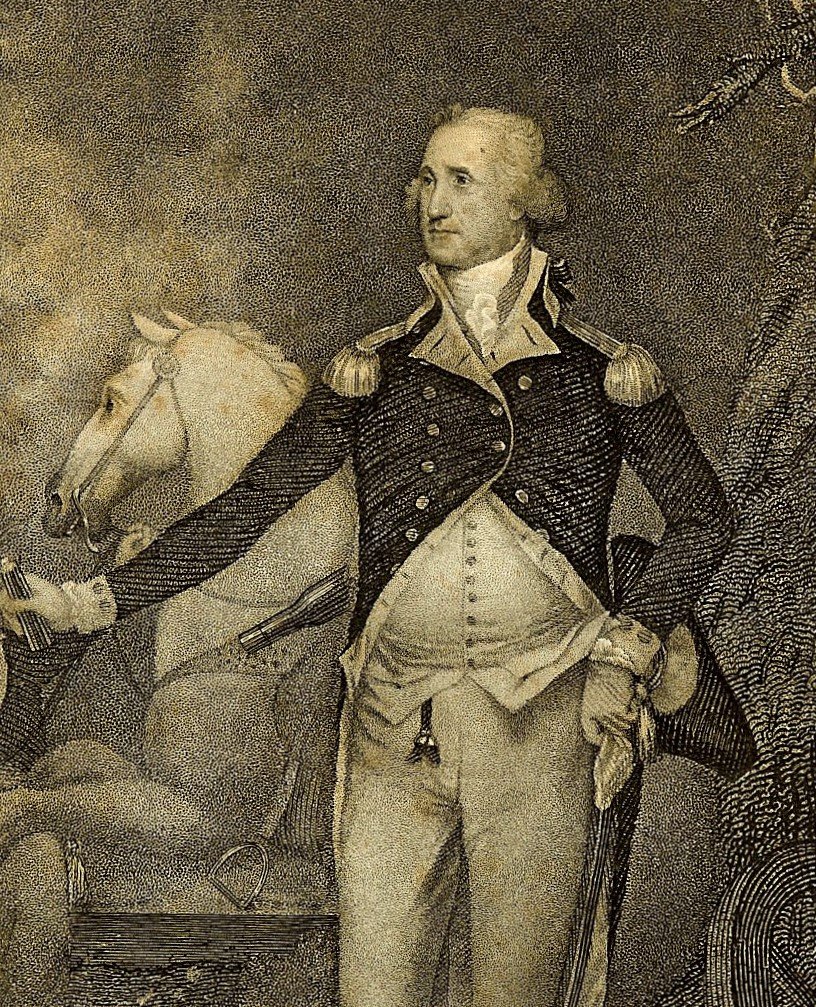GEORGE WASHINGTON AS COMMANDER OF THE CONTINENTAL ARMY
“I HAVE TURNED MY THOUGHTS … TOWARDS CARRYING ON AN EXPEDITION AGAINST THE INDIANS OF THE SIX NATIONS ….
“THE KIND OF WAR NECESSARY TO BE CARRIED ON AGAINST THE SAVAGES FOR THE MORE EFFECTUAL SECURITY OF OUR FRONTIER”.
WASHINGTON, GEORGE. (1732-1799). First President of the United States (1789-1797). Exceptional War-dated, Manuscript Letter Signed, “G. Washington”, as Commander of the Continental forces. “Headquarters, Middle Brook, March 2, 1779.” Two full legal folio pages, [in the hand of Tench Tilghman]. To Brigadier General Porter. With separate address-leaf, marked “on public-service”. Washington writes:
“I have received your favr. without date containing your Ideas of the kind of War necessary to be carried on against the Savages for the more effectual Security of our Frontier; with your opinion of the most practicable Route of penetrating the Indian Country. Your Ideas correspond in a good measure with my own and should the situation of Affairs on the Coast admit, I have t[ur]ed my thoughts and taken some measures towards carrying on an expedition against the Indians of the Six Nations, whenever the State of the Grass-Waters [Chesapeake Bay?] and other circumstances will admit. I communicate thus much to you in confidence, because the m[o]re suddenly a Blow of this kind can be struck especially against Indians, the more well the weight of it be felt.
I am obliged to you for the information you have already given me, and should you come to the knowledge of any thing further which you may deem material, or should any new Ideas occur to you, I shall be glad to have them communicated.
Should any part of our operations be carried on from me Western parts of Pennsylvania, do you think any, and what number of Volunteers consisting of good Woodsmen could be engaged to go upon such an expedition. They should be engaged for as long a time as it would probably take to complete our scheme; in short for the Expedition. If you could sound the Militia who have been under your command but in a more especial manner the men who have been driven from the Frontiers, upon this head, you would soon find how they relish the plan and could form a judgment, without letting them know the Reason. I shall be glad to hear from you on the foregoing subjects as soon a possible, and am Dear Sir, your most obt. Servt, G. Washington.”

Washington’s expedition into the Indian country, was under the command of General John Sullivan, who broke the power hold of the Six Nations in that area, and essentially freed the frontiers from the horrors of Indian warfare. The Six Nations was a Confederation of Indian tribes across upper New York State, comprising the five Iroquois nations: Mohawk, Oneida, Onondaga, Cayuga, and Seneca, and the Tuscarora. In the seventeenth and eighteenth centuries, this confederation played a major strategic role in the struggle between the French and British for mastery of North America.
During the American Revolution, a schism had developed among the Six Nations. The Oneida and Tuscarora espoused the American cause, while the rest of the league, led by Chief Joseph Brant’s Mohawk Loyalists fought for the British out of Niagara, decimating several isolated American settlements on the frontier. Consequently, Sullivan led Washington’s retaliatory expedition of 4,000 Americans against them destroying fields, orchards, and granaries as well as their morale. The final battle was near present-day Elmira, New York.
While this was occurring, a force under Col. Daniel Brodhead made an independent raid up the Allegheny, and another under General James Clinton, marched from Canajoharie to join up with Sullivan near the Pennsylvania – New York border. On August 29th, a now fully re-enforced Sullivan routed the combined Indian and Loyalist forces. Due to his vigorous and unrelenting pursuit throughout the Finger Lakes NY region, his health declined and he was compelled to resign from the Army on November 30, 1799. [DAB] Five years later, on October 1784, the ‘Second Treaty of Fort Stanwix’ was signed, which effectively marked the end of the Six Nations. This is a most fascinating period in American history and we encourage the reader to access any of a multitude of historical texts for further clarity.
This letter uniquely documents a most remarkable piece of American Revolutionary history, and Native American Indian relations, by definitively outlining the moment when the Native Americans were dealt one of the first of many setbacks, eventually leading to a decline of their cultures that persisted for the next 200 years. This historic letter was last seen over 50 years ago in 1970, [Founders Online] and has been lightly silked for preservation at some point in the past. It is now housed in a magnificent custom blue leather binder, that displays this letter magnificently. Just an exceptional item of major historic significance! One of our: “The Best of the Best.”™
$225,000.00

